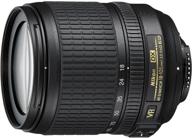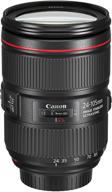
Review on 📷 Nikon AF-S NIKKOR 50mm f/1.4G Lens with Auto Focus: Perfect for Nikon DSLR Cameras by Liyum ᠌

The right product for me, the price suited me.
In the store, make sure the emphasis is accurate! It's possible for the findings to vary depending on the carcass! As I printed off a copy on my Nikon D60, the head and waist pictures were sharply focused, and the full-length photographs had clear front focus throughout. Back focus was achieved by the same lens on the D7000 in both the head and waist pictures; however, in the full-length photos, it "flew" even further back, behind the subject. Fixable on the D7000 by changing the focus correction setting to -20. (limit value). In general, if your hands grow properly and you are able to get around the faults, you will be able to take really lovely portraits and landscapes when using an aperture of f/8. The whale lens was my first, and this one was my second. It offers a very broad range of creative options to choose from. When "zooming" with your feet, the composition of the frame involuntarily improves, because you have to choose the best angle, and not shoot from the point where you saw something interesting. I tried to shoot a video with it, and it turns out a movie, very beautifully separating the object from the environment. PS: I have no prior acquaintance with the term "screwdriver," which costs fifty dollars.
- Only on cropped carcasses of the D60 and the D7000 did I shoot these. 1. Sharp even at f/1. 4. If yours is blurry, check to see if the focus is in the right place. The area that can be considered sharp on an open hole is extremely limited. 2. The design is very well done: the mount is made of iron, there is a rubber edging between the lens and the body of the camera to prevent dust and moisture from getting in, and the body does not creak. 3. The ability to focus in manual and semi-automatic modes, meaning that after the camera has focused automatically, you can manually adjust the focus to achieve the desired result. 4. It has a hood and a soft case included in the package. 5. Since the front frame of the lens does not rotate, utilizing a polarizer is made easier by this design feature. The sole drawback is that the lens block that controls the focus is not protected in any way, meaning that it is susceptible to collecting dust. Despite the fact that I have returned to my normal flying after two years of use. 6. Being focused results in a quieter environment. 7. Full frame, suitable for full frame cameras. 8. Suitable for use on smaller D40 and D60 carcasses in places where a screwdriver is not present. 9. There is very little distortion in the perspective, and there is no vignetting (on crop; I won't presume to judge how it looks in the full frame). Gluing panoramas together is a practical option.
- 1. The rate of focusing. It is not necessary to move quickly in order to get a good portrait, but he does not have time for the children. Because the autofocus was so slow, I missed some interesting images. 2. Shoals that are in focus (both in front and in back focus). 3. Focusing once more: the lens is unable to focus on small free-standing objects (like a thin twig), particularly when those objects are the same color as the background; for example, the thin stem of a flower that is sitting on a windowsill against the background of foliage outside the window. The whale lens had no experience whatsoever with issues of this nature. Thus, fix your attention on things that contrast with one another, or on your hands. Using your hands to climb into an open hole is an extremely challenging endeavor. 4. Having a hint of yellow. 5. It produces a significant amount of HA in the bokeh and along the contours of light objects, particularly in open holes. This impact can be considerably mitigated, though, by selecting the light source appropriately. 6. Drawing (subjectively). One person's trash is another's treasure. When it comes to head portraits, I find that the transition from the sharply focused portion of the image to the out-of-focus portion is not handled well enough. There is not the same seamless "flow" as seen on Soviet lenses (on Tair-11, for example).
New products
Comments (0)
Top products in 👓 Lenses

New Nikon 18-105mm Vibration Reduction 📷 Zoom Lens with Auto Focus for Nikon DSLRs

104 Review

Canon EF 50mm f/1.8 II Fixed Lens - Discontinued by Manufacturer

93 Review

Nikon 50mm f/1.8D Lens: Perfect for Nikon DSLR Cameras!

97 Review

Black Canon EF 24-105mm f/4L IS II USM Lens - Model 1380C002

78 Review





